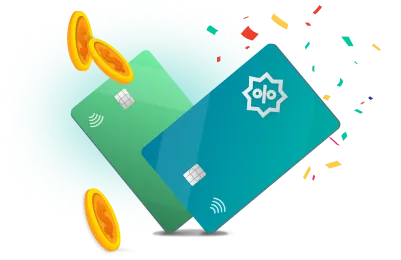Best low interest credit cards of 2025
Save money on purchases or balance transfers with a low interest card. Get matched to credit cards from our partners based on your unique credit profile.⍉

Save money on interest
If you carry a balance on your credit cards, these low rate could help you save.
Transfer your balance
Move your existing credit card debt to a low interest card to pay off debt faster.
Pay off large purchases over time
Save money with lower interest payments on purchases you need time to pay off.
Browse categories
All low interest credit cards
13 partner offers
Discover it® Cash Back
Intro bonus: | INTRO OFFER: Unlimited Cashback Match for all new cardmembers – only from Discover. Discover will automatically match all the cash back you’ve earned at the end of your first year! There’s no minimum spending or maximum rewards. You could turn $150 cash back into $300. |
|---|---|
Intro APR: | 0% intro APR for 15 months on Purchases and Balance Transfers |
Ongoing APR: | 17.49% - 26.49% Variable APR |
Rewards: | 1%-5% (cash back) |
Annual Fee: | $0 |
Wells Fargo Active Cash® Card
Intro bonus: | Earn a $200 cash rewards bonus after spending $500 in purchases in the first 3 months |
|---|---|
Intro APR: | 0% intro APR for 12 months from account opening on purchases and qualifying balance transfers |
Ongoing APR: | 18.49%, 24.49%, or 28.49% Variable APR |
Rewards: | 2% (Cash Rewards) |
Annual Fee: | $0 |
American Airlines AAdvantage® MileUp® Card
Intro APR: | 0% for 15 months on Balance Transfers |
|---|---|
Ongoing APR: | 19.49% - 29.49% (Variable) |
Rewards: | 2x (Miles per dollar) |
Annual Fee: | $0 |
First Progress Prestige Secured Mastercard® Cash Back Rewards
Ongoing APR: | 13.74% Variable |
|---|---|
Rewards: | 1% (cash back) |
Annual Fee: | $49 |
Citi® Diamond Preferred® Card
Intro APR: | 0% for 21 months on Balance Transfers and 12 months on Purchases |
|---|---|
Ongoing APR: | 16.49% - 27.24% (Variable) |
Rewards: | N/A* |
Annual Fee: | $0 |
GO REWARDS® Credit Card
Ongoing APR: | 9.99% - 18% Variable |
|---|---|
Rewards: | 1x-3x (Points per dollar) |
Annual Fee: | $0 |
Capital One Savor Cash Rewards Credit Card
Intro bonus: | $200 Cash Back after you spend $500 on purchases within 3 months from account opening |
|---|---|
Intro APR: | 0% on Purchases and Balance Transfers for 12 months |
Ongoing APR: | 18.74% - 28.74% (Variable) |
Rewards: | 1%-8% (cash back) |
Annual Fee: | $0 |
cashRewards Credit Card
Ongoing APR: | 10.65% - 18% Variable |
|---|---|
Rewards: | 1.5% (cash back) |
Annual Fee: | $0 |
Wells Fargo Reflect® Card
Intro APR: | 0% intro APR for 21 months from account opening on purchases and qualifying balance transfers |
|---|---|
Ongoing APR: | 17.49%, 23.99%, or 28.24% Variable APR |
Rewards: | N/A* |
Annual Fee: | $0 |
Capital One Quicksilver Cash Rewards Credit Card
Intro bonus: | $200 Cash Back after you spend $500 on purchases within 3 months from account opening |
|---|---|
Intro APR: | 0% on Purchases and Balance Transfers for 15 months |
Ongoing APR: | 18.74% - 28.74% (Variable) |
Rewards: | 1.5%-5% (cash back) |
Annual Fee: | $0 |
Capital One VentureOne Rewards Credit Card
Intro bonus: | 20,000 Miles once you spend $500 on purchases within 3 months from account opening |
|---|---|
Intro APR: | 0% on Purchases and Balance Transfers for 15 months |
Ongoing APR: | 18.74% - 28.74% (Variable) |
Rewards: | 1.25x-5x (Miles per dollar) |
Annual Fee: | $0 |
Capital One® Quicksilver® Cash Rewards Credit Card
Intro APR: | 0% on Purchases and Balance Transfers for 15 months |
|---|---|
Ongoing APR: | 15.49% - 25.49% (Variable) |
Rewards: | 1-10% (cash back) |
Annual Fee: | $0 |
How to find the best low interest credit card
Determine your needs
Pick a low interest card that fits your financial needs.
Compare APRs
Look for a low APR but also look at other charges and fees.
Consider annual fees
Make sure you’ll save more in interest than you’ll pay in fees.
Check balance transfer fees
Find out if the fee is less than you’ll save on interest.
Start with your FICO® ScoreΘ and see card offers matched to your credit profile.
Get started for free











